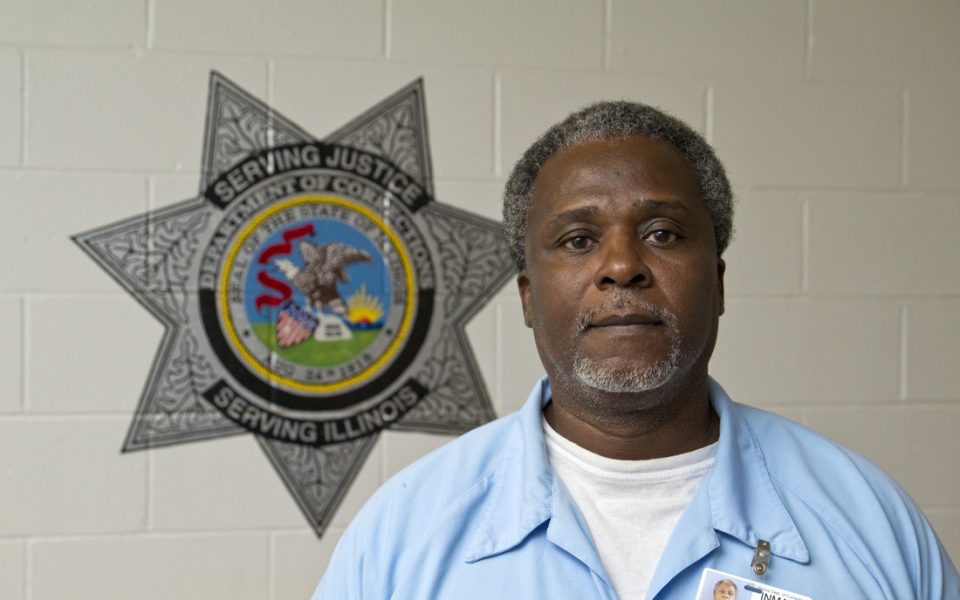by Daniel Wirtheim
When journalism students at Northwestern University got Anthony Porter exonerated for the murder of two teenagers only two days before his execution was to be carried out, they were hailed as heroes. Alstory Simon, the true murderer was placed behind bars. The story led to public outcry against the execution process, and only months later then-governor George Ryan suspended the death penalty in the state of Illinois. That was in 1999.
The 2015 documentary film playing at Red Cinemas, A Murder in the Park, follows the investigation all the way to Simon’s release last October.
Andrew Hale, the film’s executive producer, is one of Simon’s current lawyers in a $40 million lawsuit against Northwestern, his earlier defense attorney, a private investigator and David Protess, the professor of Northwestern who led the journalism team that accused Simon.
The film, directed by Shawn Rech and Brandon Kimber, tells a story of deception and manipulation. Through a series of interviews, archival clips, charts, timelines and dramatic recreations, A Murder in the Park argues that the 1982 murder of two teenagers in Chicago’s Washington Park neighborhood was indeed the work of Porter, and that Simon is simply a scapegoat in a much larger scandal. It has the quick-paced movements of a crime documentary with all the real-time investigative appeal of Sarah Koenig’s hit “Serial” podcast.It begins late one night in 1982 as a bunch of teenagers are hanging out at a gated swimming pool in Washington Park. It’s not their pool; they’ve jumped the fence. Four boys are by the diving board, two are sitting and talking on some concrete steps and one is just drying off when two strangers enter the pool area. This is where the elements get hazy.
The boy drying off, William Taylor, says that he was robbed at gunpoint for the two dollars in his pocket. He recognized the one face clearly; it was Porter. He watched Porter climb to the top of the stairs where the two teenagers, Marilyn Green and her fiancé Jerry Hillard, were talking. Porter and his accomplice allegedly sit next to the couple for a moment before opening fire on Green and Hillard. The boys by the diving board jump underwater for cover.
That’s the story through Taylor’s testimony.[pullquote]
Currently playing at Red Cinemas. Visit redcinemas.com for showtimes.
[/pullquote]
He’s the most credible witness throughout A Murder in the Park — the only one who was able to actually see what went down on the steps. But that wasn’t always his story.
Initially, Taylor didn’t see the murder. Then he said he saw Porter running by after the shooting. Then Taylor claimed to have seen Porter actually shooting the couple. When one of Protess’ students called Taylor, he declined to make a statement. But private investigator Paul J. Ciolino, who is consistently portrayed as a crook throughout the film, shows up at Taylor’s apartment and through a series of dubious efforts, gets the affidavit he wanted. In it, Taylor indicates that police had forced him into naming Porter the assailant. Years later, Taylor recanted this version, once again claiming that Porter was the killer.
Ciolino later gets Simon’s confession by rushing into the house while Simon is high on crack-cocaine and showing him a clip of an actor claiming to be a witness who testifies that Simon is the killer. Another video shows his estranged ex-wife, Inez Jackson, claiming that Simon killed the couple. In a third clip, while under duress, Simon reads a script as he looks pathetically into the camera, claiming to have murdered the couple.
At some points, A Murder in the Park plays like a legal brief, serving 20 years of information in 90 minutes. Like “Serial,” much of the allure to crime comes from its unfinished ending, with the potential for new witnesses to come forward and ongoing litigation battles between Simon, Northwestern and Protess.
Protess is one of the most contentious figures throughout the film. It’s often suggested that the impetus for exonerating Porter was to write a book and make a movie of his own — which he did. The film alleges that Protess’ desire to prove that Porter is innocent led the inexperienced Northwestern students to overlook important facts and evidence.
Protess has since left Northwestern University to assume the role of president of the Chicago Innocence Center, where he works to free wrongly convicted inmates.
“Somehow Anthony Porter’s photo is on the front page rather than the mugs of Andrew Hale and his merry men,” wrote Protess, in a November 2013 article in the Huffington Post. “What’s wrong with this picture?”
Join the First Amendment Society, a membership that goes directly to funding TCB‘s newsroom.
We believe that reporting can save the world.
The TCB First Amendment Society recognizes the vital role of a free, unfettered press with a bundling of local experiences designed to build community, and unique engagements with our newsroom that will help you understand, and shape, local journalism’s critical role in uplifting the people in our cities.
All revenue goes directly into the newsroom as reporters’ salaries and freelance commissions.


Leave a Reply